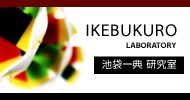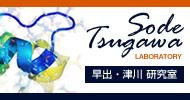Team:Tokyo-NoKoGen/Notebook
From 2012.igem.org
'''"E. communication": ''E. coli'' that is capable of communication.'''
'''Abstract'''
This year, we’d like to let E. coli communicate with each other like human beings using the concept of “optogenetics”. As the means of communication, we chose the “light”. An E. coli will emit light to pass on the light signal, the “message”, to the neighboring E. coli in a separate flask. When the neighbor receives the “message”, itself will emit light to pass on to the next E. coli. E. coli will relay the light signal, until all E. coli has received the “message”.
Light inducible gene expression system doesn't require any chemical inducer, so, there will be no need to remove chemical compounds from the medium, and can send the signal to E. coli located in independent vessels. This means that E. coli will be able to communicate swiftly and wirelessly by using light.
To make communication faster, we are focusing on post transcriptional regulation. Regulating gene translation will make the network faster than regulating gene transcription.
'''Details'''
Transmitter (lux bioluminescence)
We use lux operon from luminous bacteria as the light source because we expect it to have a potential for emitting bright bioluminescence in E. coli.
Moreover, we don't have to add any chemical compounds such as substrate, because, E. coli have all compounds needed to produce luminescence.
Receiver (rhodopsin)
chose bacterial Rhodopsin as the light receptor. We aim to combine rhodopsin and the lux operon, to regulate the bioluminescence of an E. coli by the light signal received by rhodopsin.
Amplifier (strengthen lux luminescence)
Preparing…
Advantage of making “E.communication”
“E.communication” may be applicable to display or illumination. It is not necessary to use electricity.
'''Manufacture'''
?apply to detection system
?make bio LED
'''Key words'''
Communication, Light, Wireless, Post-transcription, lux operon, Luminous bacteria, Bioluminescence, Rhodopsin, Optogenetics
'' "
"





